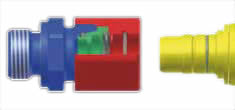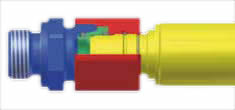All our high pressure hydraulic hoses are produced through strict quality controlling system. Here, we will introduce you the whole production process to let you know more about the high pressure hydraulic hose and our company.
Turn hydraulic unit and determine the location in the leaking hydraulic fluid. It is easy to locate the leak if your traffic is on the dry surface. Make a mark in the part of the system in order to understand exactly what kind of hydraulic hose needs to be replaced.
Release the pressure in the hydraulic system. Turn off the hydraulics and compressed air control switch to the neutral position, which in turn will release the pressure from the system, and will remove the damaged hydraulic hose.
Prepare a suitable container and place it directly under the hydraulic hose, which you plan to relax. Loose the fitting with a wrench. Do carefully, as the hydraulic oil may still remain in the hydraulic hose. In some cases you need to remove some of the equipment that will prevent the replacement of the hydraulic hose.
Remove the damaged hydraulic hose before you install a new hydraulic hose, carefully remove debris from the fittings and aprons. Install a new hydraulic hose in place.
If you have enough hydraulic oil in the hydraulic system, observe a few minutes for leaking hydraulic oil in other places. If not, add the hydraulic oil in the hydraulic tank. Replacement hydraulic hose usually solves the problem of leakage of the hydraulic system. Remind that to replace the hydraulic hose must be used exactly the same type of hydraulic hose, as well as remote.
Steps to replace the hydraulic hose are quite simple and you are able to do them for a few minutes. To avoid this problem with the hydraulic hose in the future, routine maintenance of hydraulic equipment is necessary in a timely manner.

Tube and hydraulic hose on connection

Tube and hydraulic hose assembled in together